At this year’s Academy Awards, the Coen Brothers’ adaptation of Charles Portis’ True Grit has been nominated for Best Picture. While the original version of the film won an Academy Award for John Wayne, westerns have not been historically fortunate at the Oscars. Indeed, only three westerns in the eight decades of ceremonies have taken out the top slot: Cimmaron (1930), Dances with Wolves (1990) and Unforgiven (1992). Whether True Grit will join these illustrious ranks is something we will discover next week at the Oscars, but it does demonstrate one thing: the humble western is still capable of going toe-to-toe with the best of them. In fact, in order for the western to be taken seriously in the contemporary context, it seems that they must be the best.
This three-part series explores the way the western, and in particular the evolution of the western hero, over the last century of cinema. In The evolution of the western: Part 2 – The Man with No Name, we saw that the 1980s almost killed the western. With the mega-flop Heaven’s Gate virtually ringing the death knell for the western once and for all, it was only a few quick commercial successes in the late 1980s (Young Guns) and on the small screen (the mini-series Lonesome Dove and the ongoing Little House on the Prairie) that kept the genre alive in this period. Yet the western would live again thanks to some dedicated filmmakers inspired by the westerns of their own youth. From Kevin Costner to the Coen Brothers, the western would go international, with countries as diverse as France, Korean, Japan and even Australia. In fact, despite the dwindling number of westerns produced in this period, the quality has surpassed much of what has come before. As a primer, The Reel Bits presents this compilation of clips from westerns over the last twenty years.
Shooting straight
Kevin Costner was no stranger to westerns, having starred alongside Kevin Kline, Danny Glover, Brian Dennehy, John Cleese, Scott Glenn and Jeff Goldblum in Silverado (1985), one of the few westerns with modern commercial success in the 1980s. Yet when screenwriter Michael Blake wrote Dances with Wolves on spec, it was a then relatively unknown Costner who encouraged him to rewrite it as a novel, as it would have a better chance of being picked up and adapted. Sure enough, it was eventually published and Costner secured the rights to the novel, and would go on to direct, star and produce the film. Turning the tide of expectations, the film would win seven Academy Awards (including Best Picture, Director for Costner, adapted screenplay for Blake, cinematography, editing, sound mixing and score, for the late John Barry), and earned over $400 million at the box office around the world. Yet its significance was more thematic than commercial and critical: it is one of the more obvious examples of a revisionist western, in which there was a more balanced view of Native Americans during the period and the US army was the villain. This is by no means insignificant at a time when the modern US army was engaging in their first invasion of Iraq during the 1990 Gulf War.
Costner would become indelibly linked with the western genre, although he has only made two obvious additional entries to the genre (sci-fi westerns Waterworld (1995) and The Postman (1997) notwithstanding). The first of these, Wyatt Earp (1994), saw Costner take on a role that Kurt Russell had done only a year before in Tombstone (1993) and has been famously portrayed by Randolph Scott (Frontier Marshall (1933)), Henry Fonda (My Darling Clementine (1946)) and Burt Lancaster (Gunfight at the O.K. Corral (1957)) before him. Directed by longtime collaborator Lawrence Kasdan, Wyatt Earp differed from the slightly earlier George P. Cosmatos helmed Tombstone – which Costner was originally involved in – in that it attempts to take a more holistic approach to the character in a whopping 191 minutes. The films depart where Costner disagreed with Kevin Jarre’s script. Jarre, who also wrote civil war/western Glory, focused on a variety of characters in Tombstone, foreshadowing the action-oriented westerns that would come in the following years. Costner would return to the director’s chair with Open Range (2003), a criminally underrated character-based adaptation of Lauran Paine’s novel “The Open Range Men”, in which he co-starred with western veteran Robert Duvall. It depicted the end of the era of free-range cattlemen, and to date, it has been Costner’s last in the genre.
Perhaps the ultimate revisionist western is Unforgiven (1992), directed by and starring Clint Eastwood. Three decades after he breathed new life into the genre as Sergio Leone’s Man with No Name, Eastwood put a bookmark on his own illustrious career as an outlaw. His character is an aged gunslinger who wants nothing to do with his former life. Tormented by his past, he is inevitably drawn back into the violence. Parallels with Eastwood’s career on-screen, during which time he explored the uglier side of the western myth, are unavoidable but it also marked a dark high point for the genre. Winning Best Picture and Director for Eastwood, along with Academy Awards for the editing and co-star Gene Hackman, Eastwood’s meditation on ageing and what it means to be a hero was the beginning of a self-reflective journey that would end with Clint’s last (to date) appearance on-screen in the non-western Gran Torino.
Last action hero
The western hero has been tough, has been noble, conflicted, a pacifist, and even an-anti hero. Yet in the modern context, the western hero was increasingly being asked to take on the role of superhero as well. This was quite literally the case in the supernatural Jonah Hex (2010), a misguided adaptation of the DC Comic from the Neveldine/Taylor duo behind the adrenaline-fueled Crank series. The heroes were typically men, and manly men at that, and Jonathan Kaplan’s all-female Bad Girls (1994), Sam Raimi’sThe Quick and the Dead (1995) and the little-seen Bandidas (2006), with a scantily clad double-bill of Salma Hayek and Penelope Cruz, being exceptions to the rule. Other films that came out over the last few decades – including Shanghai Noon (2000), Once Upon a Time in Mexico (2003), sci-fi hybrid Serenity (2005) and Wild, Wild, West (1999), Appaloosa and the forthcoming Cowboys & Aliens – have been characterised by either adding a hyperkinetic element to the narrative or being a hybridisation of several genres. While it could be argued that westerns have always blended saddles and spurs with other elements – typically dramatic, romance and inevitably action themes – over a century of the oldest form of American cinematic storytelling was influencing not only other genres, but international filmmakers as well.
This thing grabs hold of us: when is a western not a western?
Ang Lee could never be accused of making the same movie twice, with credits as diverse as Hulk, Crouching Tiger, Hidden Dragon, Sense and Sensibility and The Wedding Banquet to his name. When the Taiwanese-born director turned his eye to Brokeback Mountain (2005), some simplistically (and ignorantly) dubbed this the “gay cowboy movie”. However, while the film was undoubtedly set in cowboy country of Wyoming and traced the sexual and emotional relationship of two cattlemen (brilliantly portrayed by Jake Gyllenhaal and the late Heath Ledger) in the 1960s, it was overwhelmingly about the universal theme of love. This modern take on the western merely took the backdrop of the western to tell its tale, but the film (and by extension Annie Proulx’s original short story, adapted by Pulitzer Prize winning western writer Larry McMurtry) very knowingly uses this most masculine of settings to contrast its doomed romance against. The setting is contemporary with 1960s westerns Hud (1963) or The Misfits (1961), two increasingly cynical takes on the western mythos, and some audiences found this alternative take on the western challenging and confronting. Professional critics and the Academy Award for Ang Lee disagreed: the film is a modern masterpiece in any genre.
The Three Burials of Melquiades Estrada (2005) saw director and star Tommy Lee Jones continue this modern take on a western, following a script from Guillermo Arriaga. Jones instantly evokes the memory of every Western in the century that preceded it, while simultaneously carving out his own niche within that impressive canon. Ever since A Fistful of Dollars (1964), it is difficult to look at a Western landscape and not think of Sergio Leone’s fistful of so-called ‘Spaghetti Westerns’ and hear Ennio Morricone’s iconic scores, something Quentin Tarantino was no doubt conscious of in Kill Bill: Volume 2 (inspired by everything from Leone to The Searchers). Composer Marco Beltrami was actually a student of Morricone’s, and his equally haunting score proved that the Western is not only still alive and kicking, but also capable of still telling compelling narratives and powerful depictions of male character arcs that completely transcend the genre.
2007 saw two films from contemporary American filmmakers that continued to challenge the notion of what a western is: the Coen Brothers’ No Country for Old Men and P.T.Anderson’s There Will Be Blood. Both based on novels (from Cormac McCarthy and Upton Sinclair respectively), both films are dark nightmarish versions of the American dream perverted, of the realities of the pursuit of greed and of the evil that lurks within the heart of men. The evil is characterised by brilliant performances of Javier Bardem and Daniel Day-Lewis respectively, neither of whom seem to possess an ounce of human kindness or remorse. Neither film has a clear hero, nor could precisely be called a western in the traditional sense, but each comes from the tradition of western filmmaking. Which begs the question, what is a western, and does it remain one if it isn’t being made in the US west?
The 2000s have seen a slew of ‘westerns’ made around the world, many of them in languages other than English or filmed in Ford’s American landscapes. This is reminiscent of upstart Sergio Leone using Europe as a stand-in for the Old West, and it seems that many of those films are directly inspired by Leone and his so-called ‘spaghetti westerns’. The two most obvious entries are Kim Jee-woon’s The Good, the Bad and the Weird (2008, South Korea) and Takashi Miike’s Sukiyaki Western Django (2007, Japan). The titles are naturally drawn directly from Leone and his contemporaries Sergio Corbucci, but more important is the heavy stylistic influence that those Italian westerns have had on the respective filmmakers. Although both are infused with the same hyperkinetic energy that characterises many of the action films from Korea and Japan, an energy that Sukiyaki Western Django actor Quentin Tarantino tends to inject into his own pastiche films, they heavily employ the extreme close-ups and lingering gazes that made Leone’s works so highly imitable. The French drew on comic book traditions for both Jan Kounen’s Blueberry (2004, France), known as Renegade outside Europe, and Lucky Luke (made every few years in either France, Italy or Argentina). Meanwhile, closer to home, the harshness (or “fresh hell”) of the Australian landscape saw a string of films including John Hillcoat’s The Proposition (2005), Kriv Stenders’ Lucky Country and Alexander Pearce’s Van Dieman’s Land (both 2009).
The western myth continues
Despite the many different takes on the western, traditional turns are less common but still strong. The Assassination of Jesse James by the Coward Robert Ford (2007) takes another look at the classic myth of gunslinger Jesse James and the ‘truth’ behind his death. On one hand it is the most traditional of westerns, pulling together stars Brad Pitt, Casey Affleck and Sam Rockwell in the same way that the golden age westerns would attract the finest thesps of the day. On the other hand, it is also an explosive deconstruction of that same myth, exposing the darker side behind every great story, while simultaneously maintaining the ethereal and epic nature that is inherent to those stories. True Grit (2010) continues this tradition, wholly replicating the films that have gone before, but bringing with it a dark sophistication that can only be built upon a hundred years of filmmaking. If True Grit is any indication, then the genre is safe for another century.
Related articles:

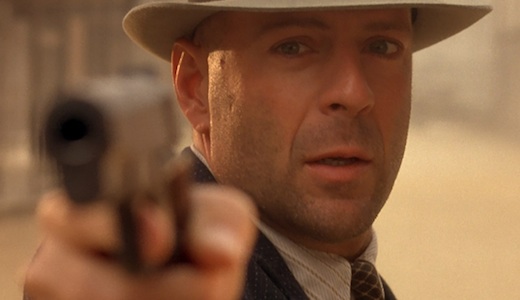
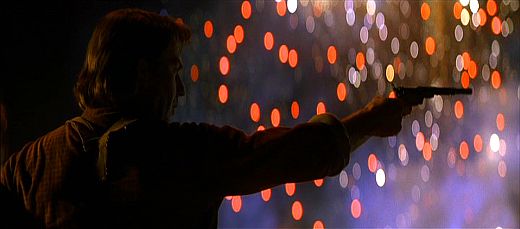
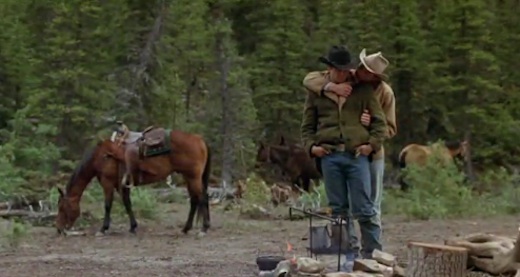
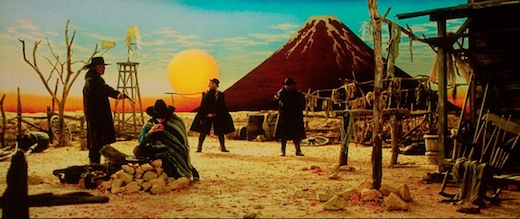
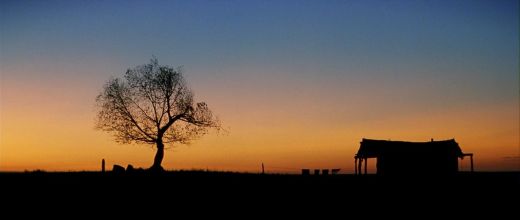



Reading this article and watching the video has coincided with my recent foray into Red Dead Redemption and I am all of a sudden wanting to watch more westerns again!